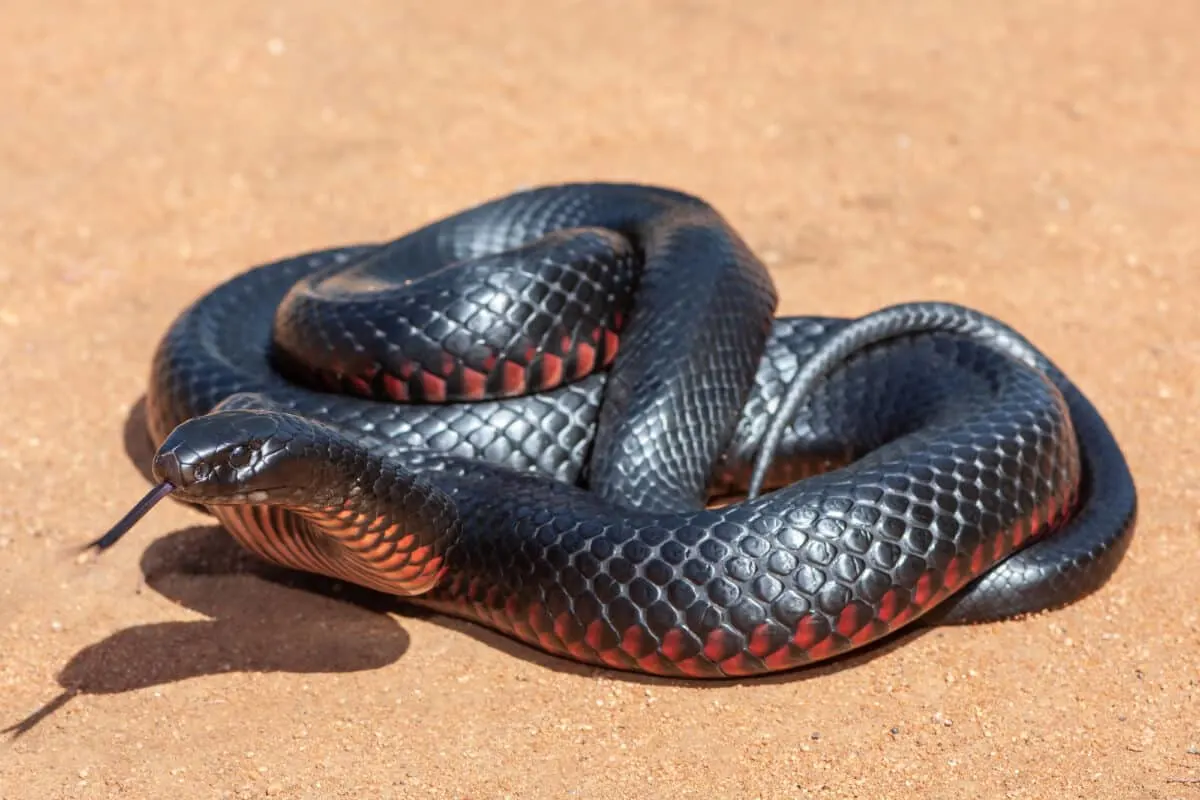Australia, known for its diverse and unique wildlife, has been home to some awe-inspiring and, at times, daunting creatures. Among them, the Red-Bellied Black Snake (Pseudechis porphyriacus) stands out as a fascinating serpent, captivating the attention of both wildlife enthusiasts and herpetologists alike.
Physical Characteristics
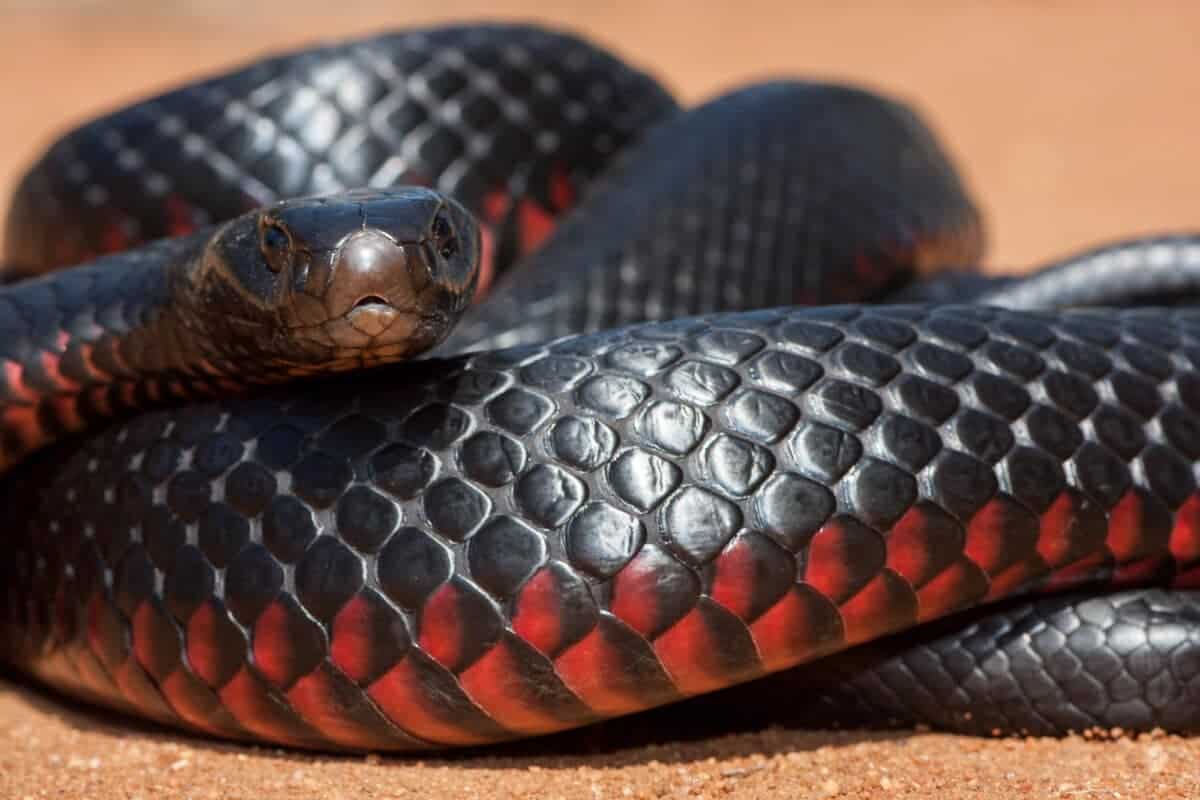
The Red-Bellied Black Snake, characterized by its sleek and glossy appearance, is a venomous snake native to eastern Australia. It typically exhibits a black or dark brown coloration on its back, complemented by a distinctive red or pinkish belly, from which it derives its name. Adults can reach lengths of up to 2 meters (6.5 feet), making them a formidable presence in their natural habitat.
The scales of the Red-Bellied Black Snake are smooth and shiny, adding to its striking aesthetic appeal. Its eyes, equipped with vertical pupils, contribute to its acute vision, aiding in hunting and navigation.
One notable feature of this species is its venom, which is potent but not considered lethal to humans. While a bite can cause pain and discomfort, fatalities are extremely rare, and antivenom is available for those who require medical intervention.
Habitat and Range
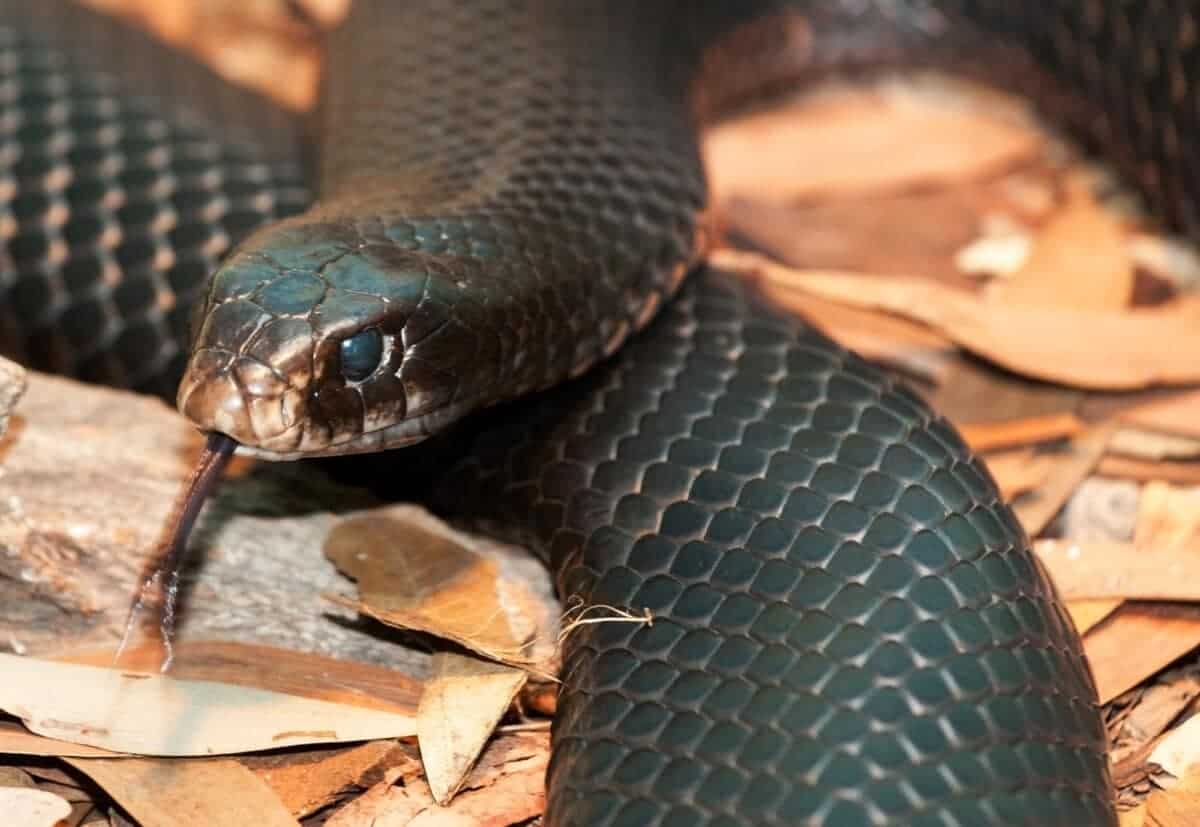
- Red-Bellied Black Snakes are commonly found in a variety of habitats, including woodlands, forests, and near water sources like swamps and rivers.
- Their range extends along the eastern coast of Australia, encompassing diverse ecosystems from Queensland to South Australia.
Diet and Hunting Behavior
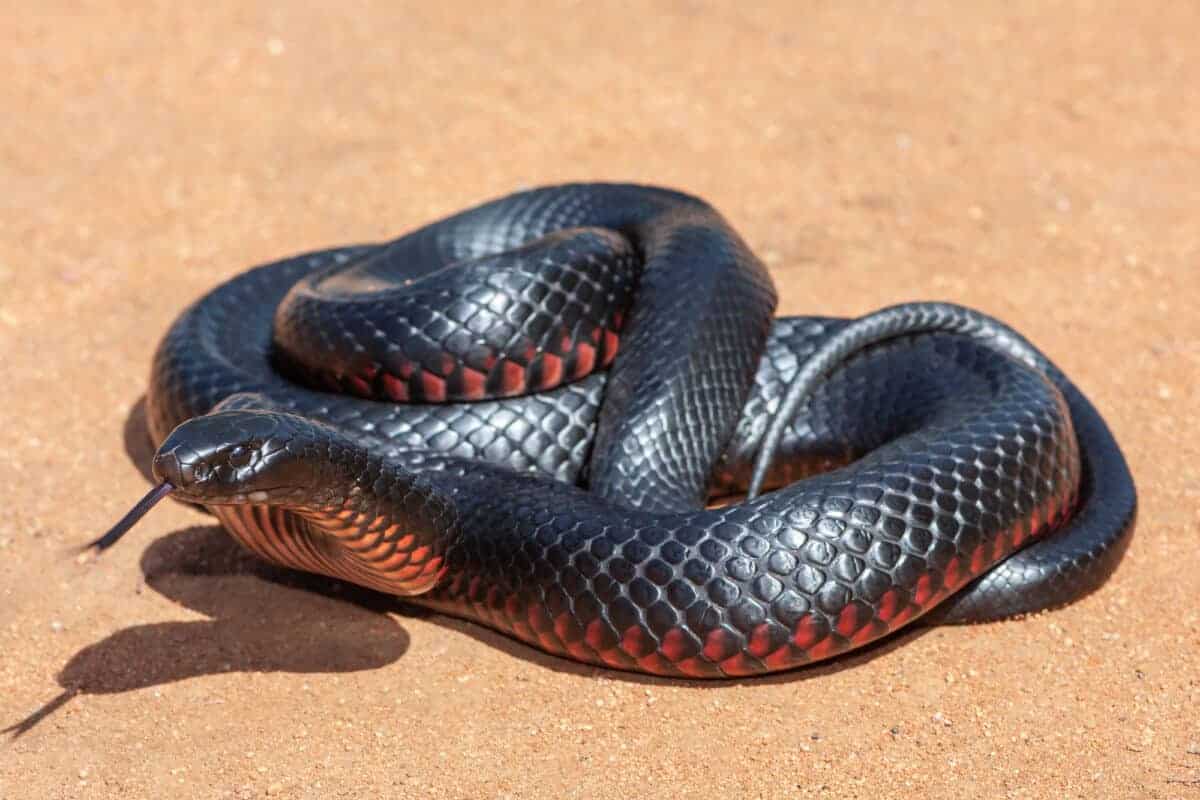
- Red-Bellied Black Snakes are carnivorous and primarily feed on frogs, reptiles, and small mammals.
- Their hunting strategy involves subduing prey by injecting venom and then swallowing it whole once incapacitated.
Mating and Reproduction
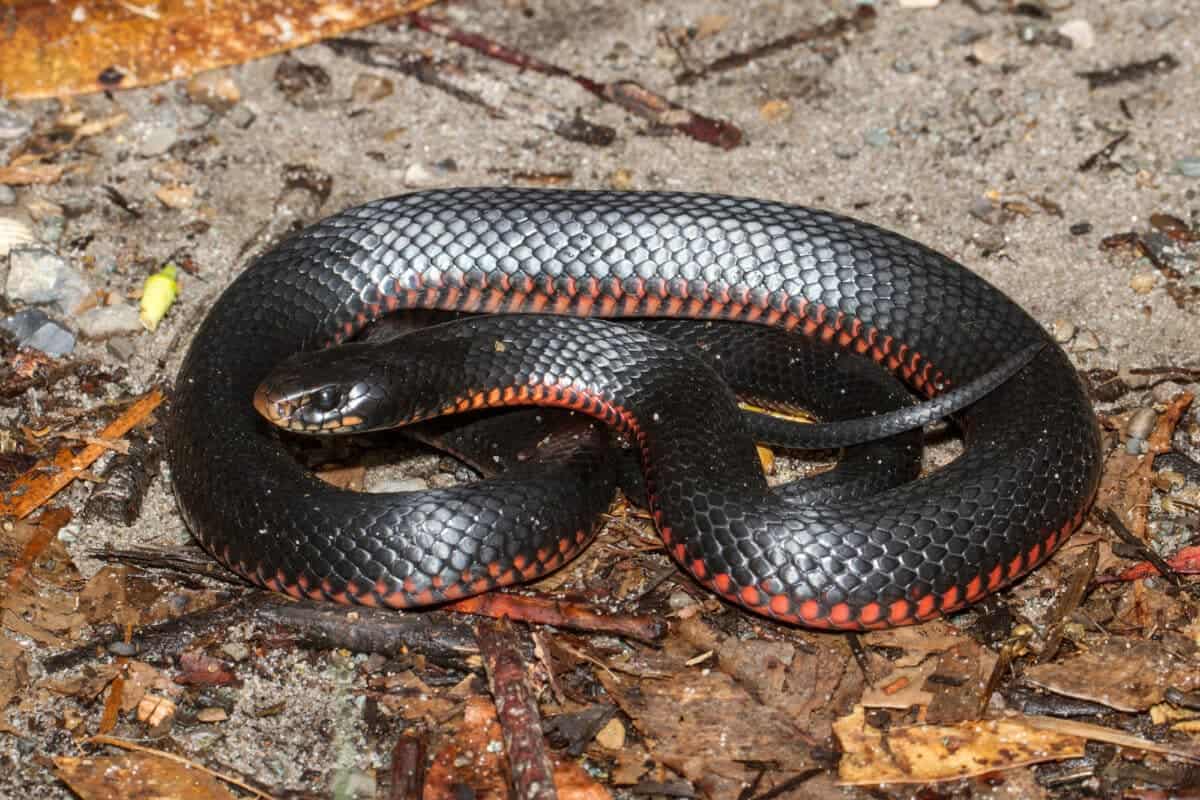
- Mating occurs during the spring, and female Red-Bellied Black Snakes give birth to live young rather than laying eggs.
- A single litter can comprise up to 40 offspring, each measuring around 25 cm in length.
Behavior and Temperament
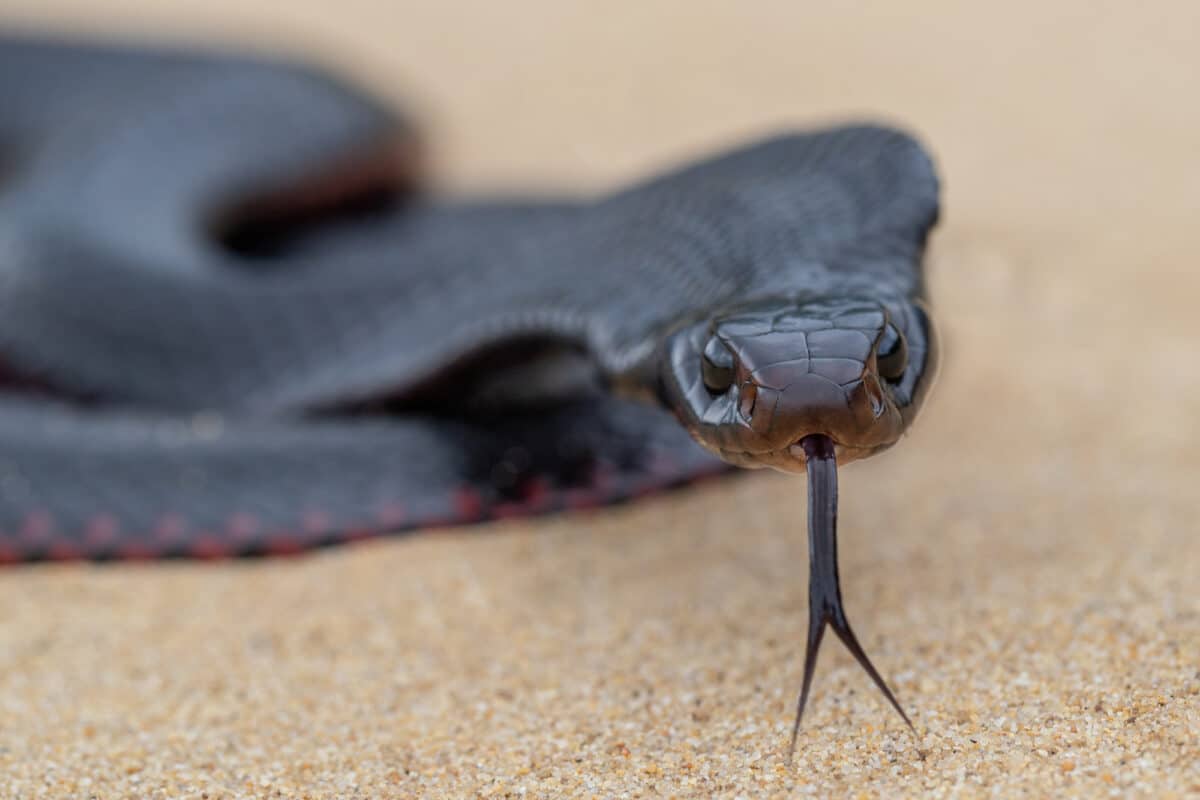
- Despite their venomous nature, Red-Bellied Black Snakes are generally shy and prefer to avoid confrontation.
- When threatened, they may adopt defensive postures, such as flattening their bodies and hissing loudly.
Ecological Importance
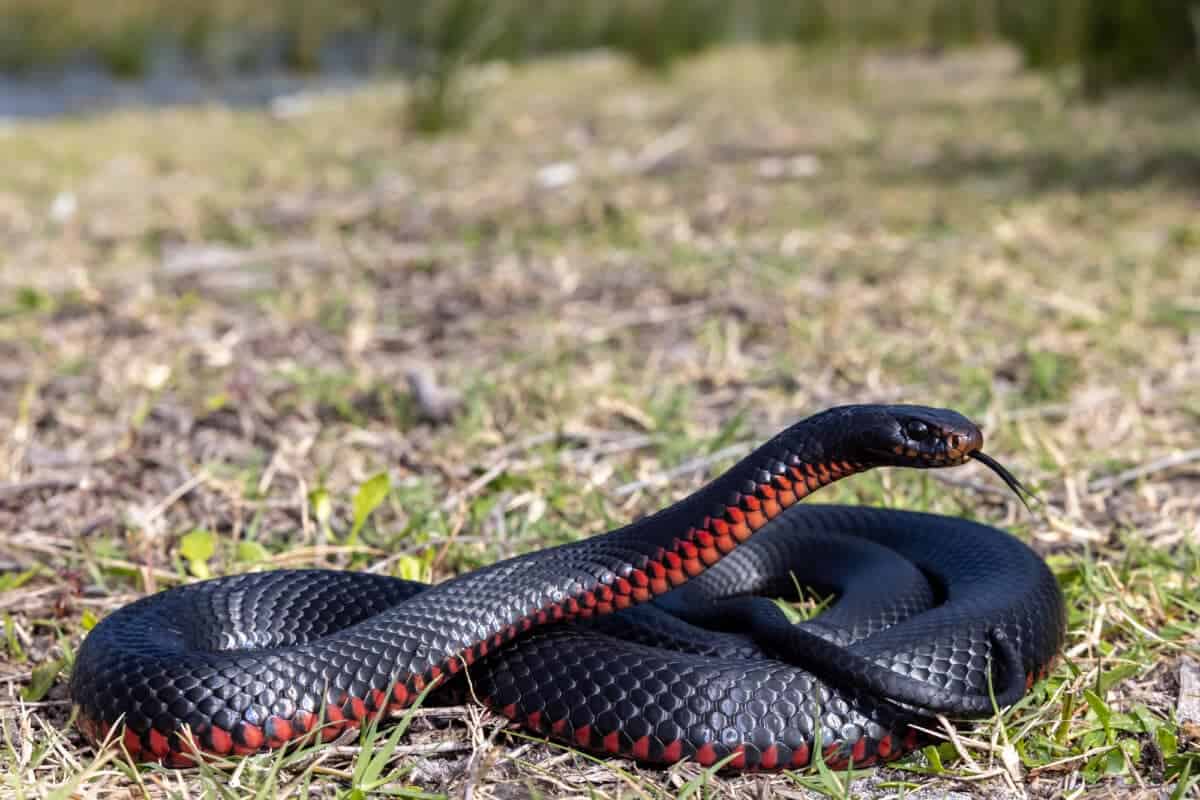
- As predators, these snakes play a crucial role in maintaining ecological balance by controlling populations of small mammals and amphibians.
Color Variations
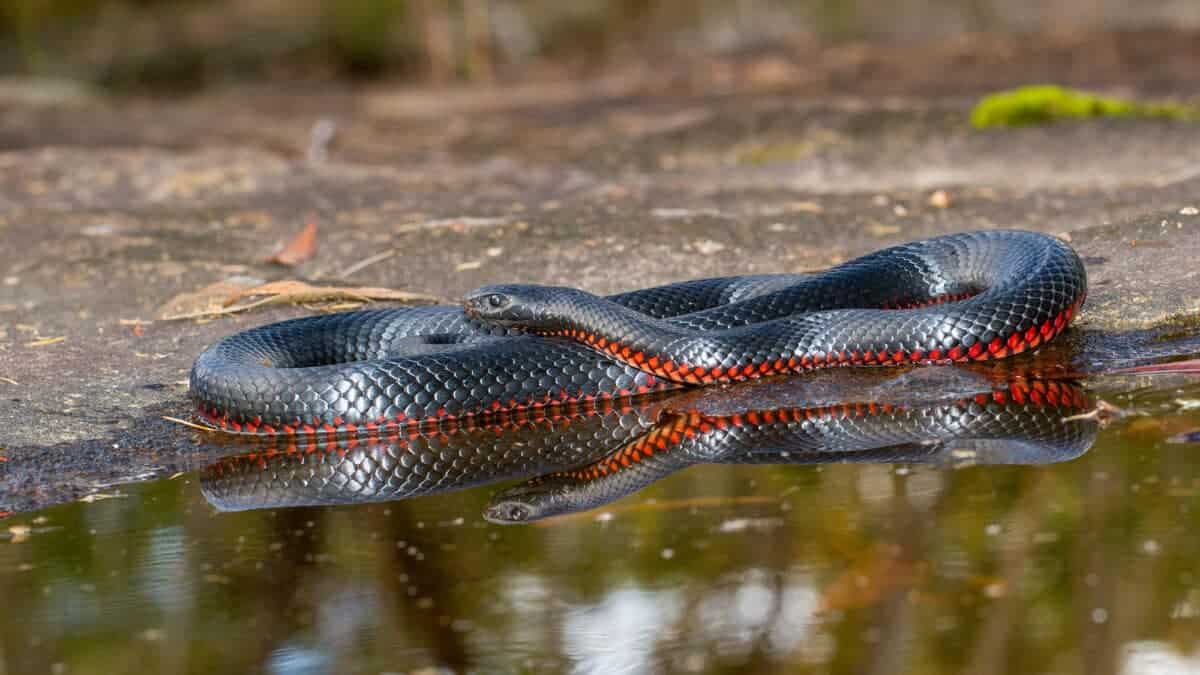
- While the Red-Bellied Black Snake is named for its characteristic red or pink belly, individuals may exhibit variations in coloration. Some individuals may have more vivid red hues, while others might showcase a lighter or even cream-colored belly.
Thermoregulation Techniques
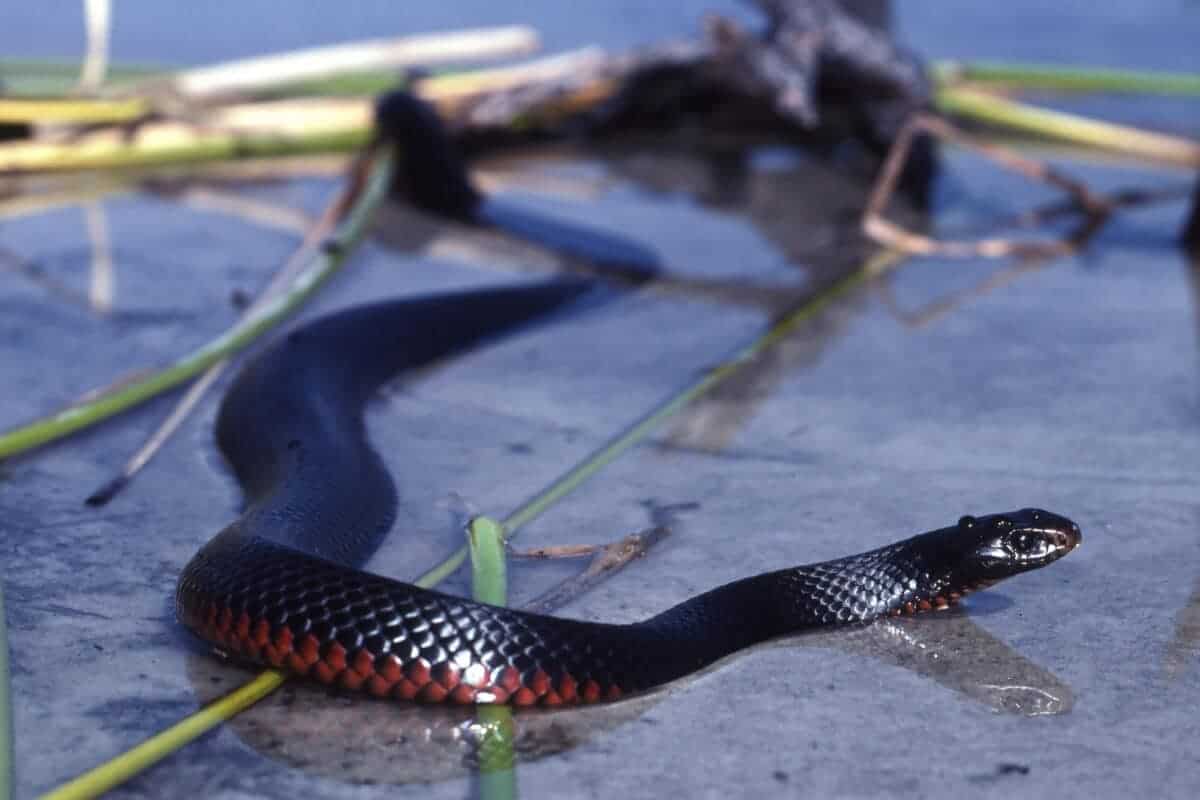
- Like many reptiles, Red-Bellied Black Snakes use basking as a thermoregulation method. They can often be seen sunning themselves to regulate their body temperature, ensuring optimal metabolic function.
Bottom Line

The discovery of the largest Red-Bellied Black Snake on record serves as a reminder of the captivating diversity within Australia’s wildlife. While these creatures command respect for their venomous capabilities, understanding and appreciating their role in the ecosystem contributes to fostering a harmonious coexistence between humans and nature.
If you enjoyed this article, check out our related article links below for more!
Next up:
Join our Forum for free today!

- How To Treat A Komodo Dragon Bite - July 25, 2024
- Cute Lion Cubs Enthralled by “The Lion King” Movie - July 25, 2024
- Why Do Zebras Have Stripes - July 23, 2024

